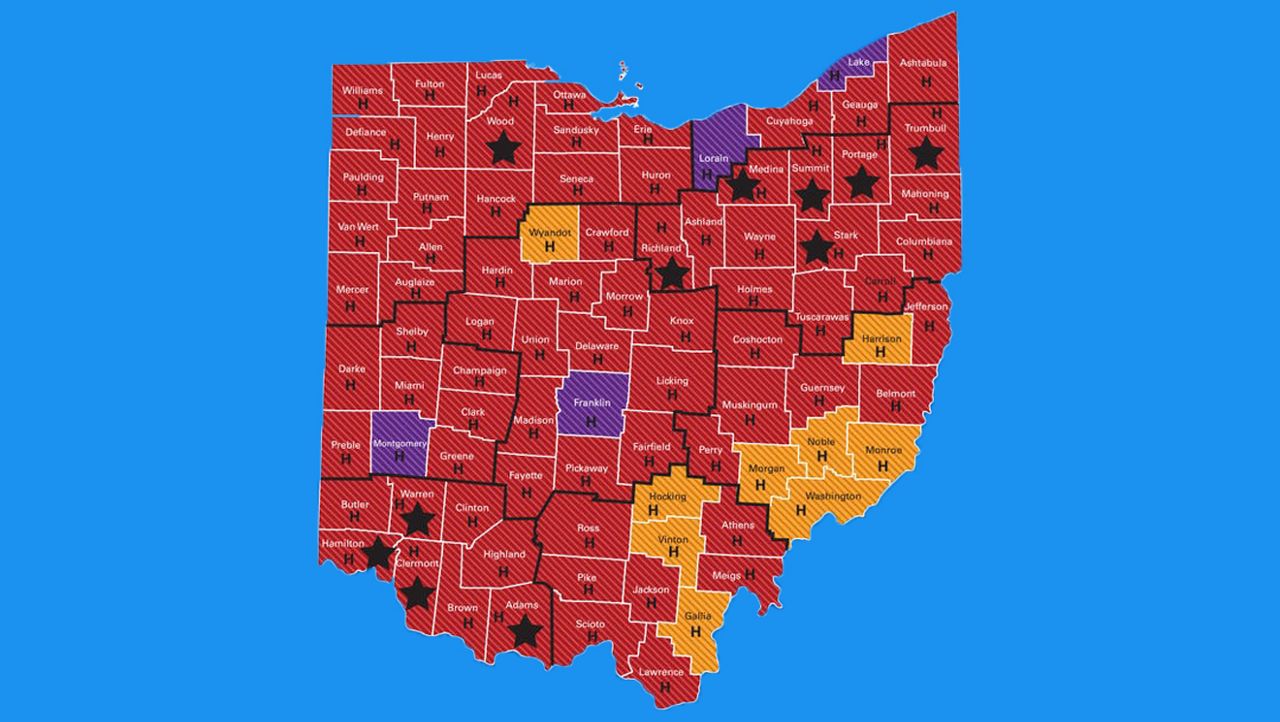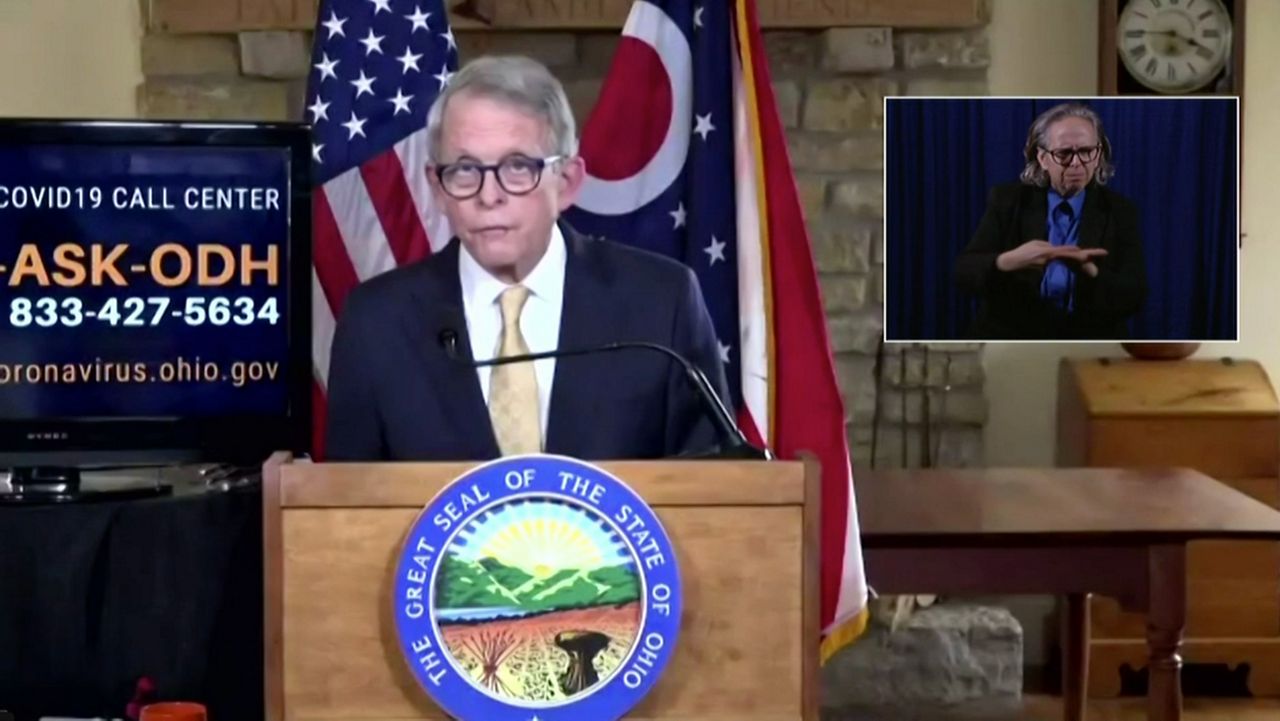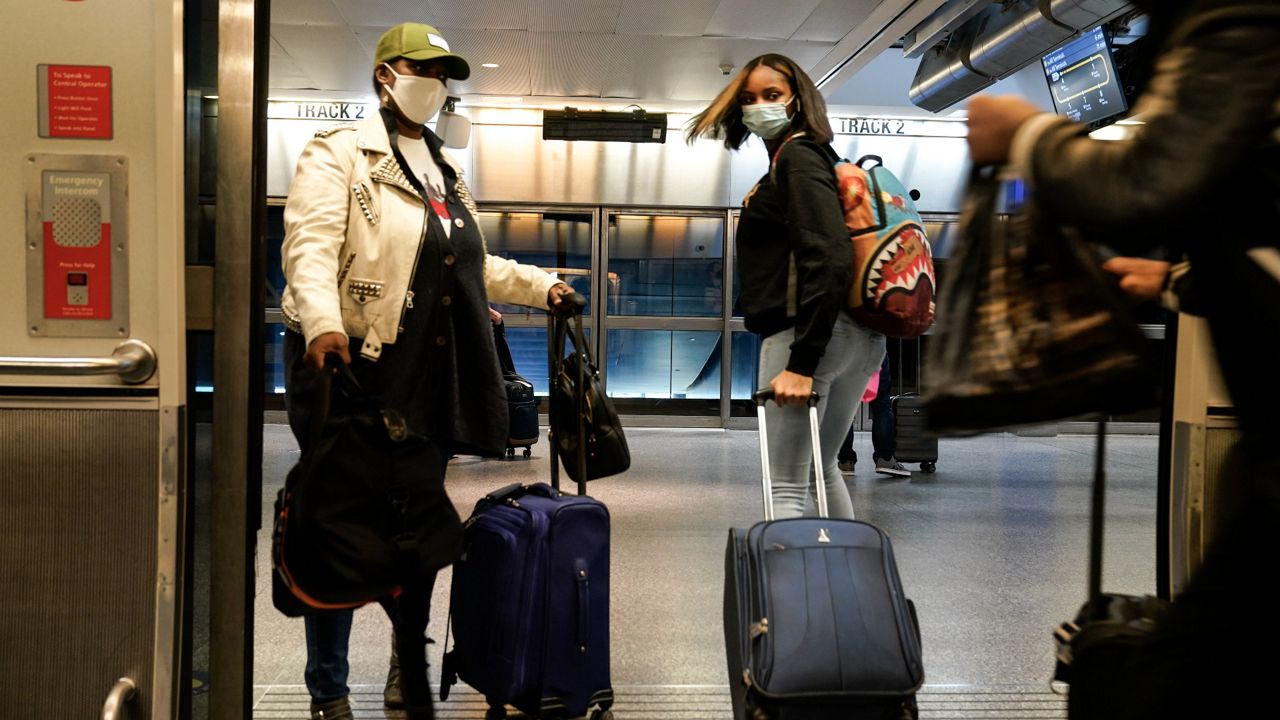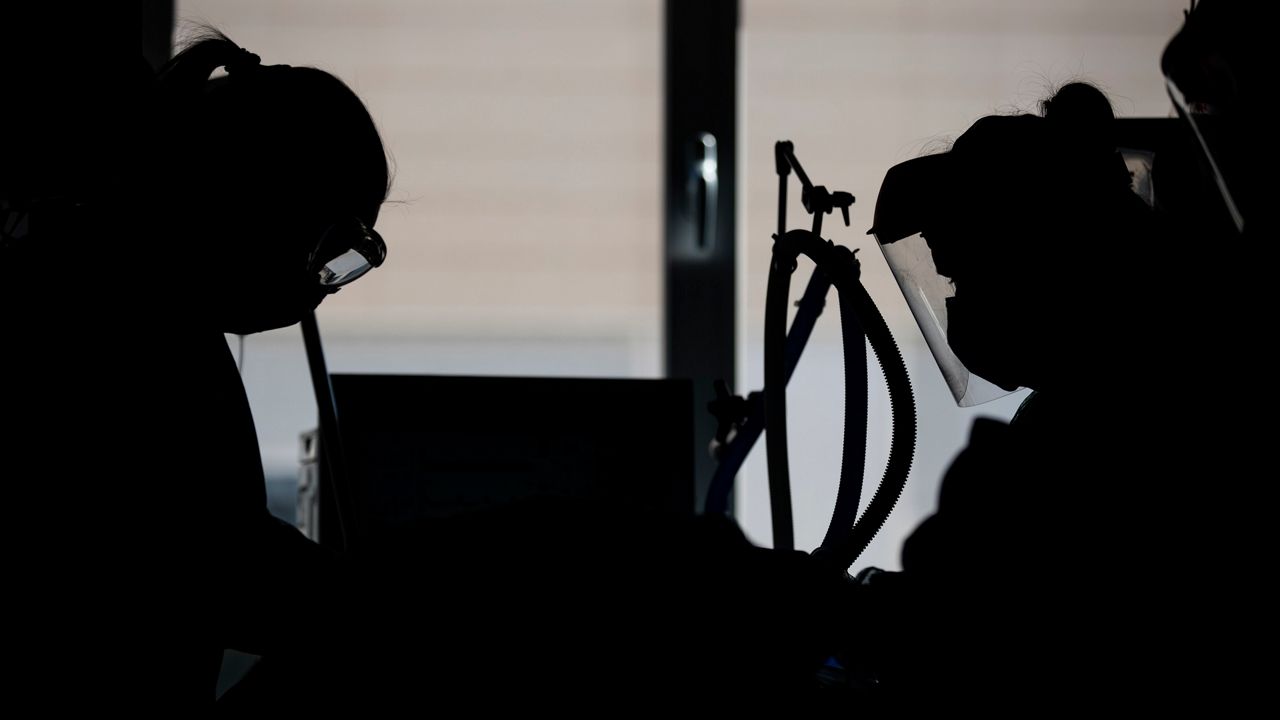COLUMBUS, Ohio — Three Ohio counties entered the purple as the set a record for daily COVID-19 deaths Wednesday with 156 new deaths.
Lake, Montgomery, and Lorain now join Franklin County in the Purple Alert Level 4 — the worst indicator on the state's four-level scale showing high spread of COVID-19. Franklin became the first county to enter the purple last week.
Ohio updated its color advisory map Wednesday — a day earlier than normal due to the holiday. The map shows where the spread of the virus is accelerating most quickly.
Eleven counties were added to the watch list, meaning they are at risk of entering the purple next week.
The state reported 10,853 new cases, the second-highest case report since the pandemic began, and the second most of all U.S. states Wednesday.
The state reported 417 new hospitalizations, and a total of 4,541 inpatients receiving care in hospitals — a new record.
Gov. Mike DeWine shared Tuesday that Ohio expects the first batch of Pfizer’s vaccine to arrive in the state around Dec. 15. He said Moderna’s vaccine is expected to arrive a week later. It will take months for the general public to have access to the vaccine.
In the meantime, the governor said there is no indication the spread of the virus is slowing or has began to plateau. In fact, all relevant indicators suggest the pandemic is worsening in Ohio, as indicated by Wednesday's record death toll.
As of Monday, hospitals were shuffling ventilators around the state and transporting patients like never before to meet the challenges of the current hospitalization rates.
Hospitalizations have risen eight-fold since Sept. 20 when fewer than 600 patients were hospitalized with COVID-19.
Ohio has sufficient hospital beds. Officials say that is not the problem. The challenge now is staffing enough doctors and nurses to care for the surge of patients.
Last spring, officials prepared for a worst-case scenario in which unconventional bed space would become needed for a surge of COVID-19 patients.
In Franklin County, officials staged emergency beds at the convention center downtown. Hundreds of beds could be reactivated in a matter of a few days, but officials say adding more beds won’t help. There would be no health care workers to staff them.
Hospitals facing COVID-19 surge in regions that have seen the worst hotspots brought in traveling nurses to add staff to meet the challenges of those crises.
With the entire country getting hit at once as cases and hospitalizations are soaring nationally, there are no reinforcements to come to states like Ohio, at least not enough to staff emergency hospital staging areas on a large scale.
Officials say they can free up more hospital bed space by halting elective surgeries, which some hospitals have already done. Hospitals will continue to shuffle resources, but at a certain point, there will be nowhere else to move patients. The pandemic is hitting every corner of the state. Outbreaks are no longer localized.
Hospital officials said Monday the situation is becoming increasingly alarming. If health care workers become overwhelmed, the quality of care will be compromised not just for COVID-19 patients, but for potentially all types of patients in hospitals.







